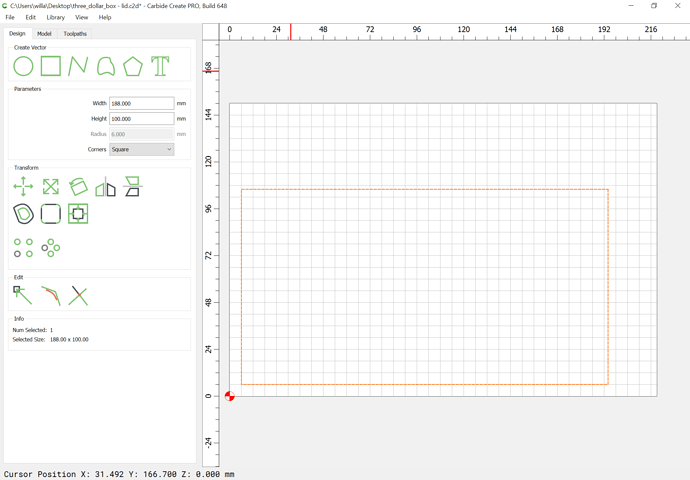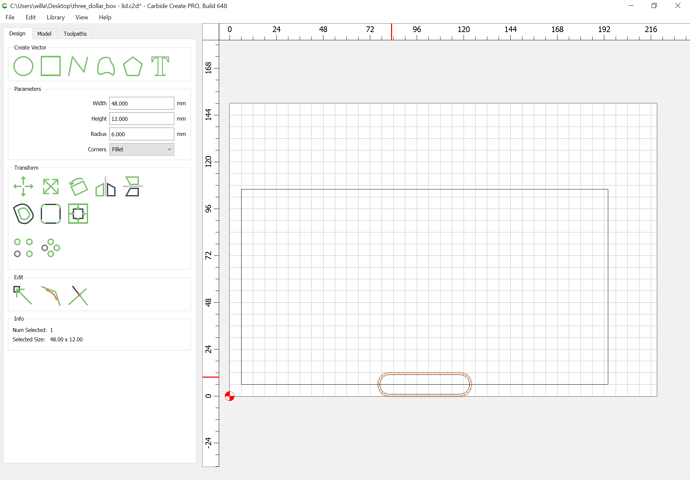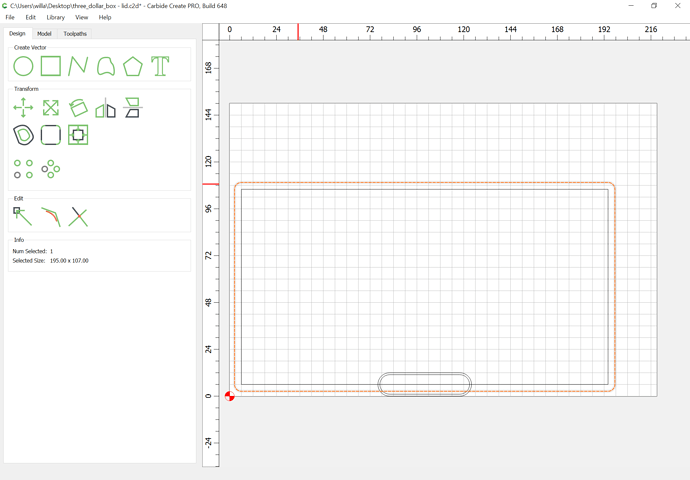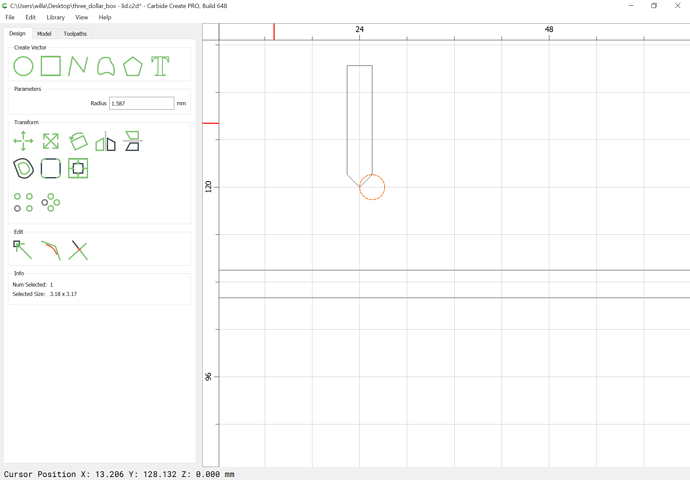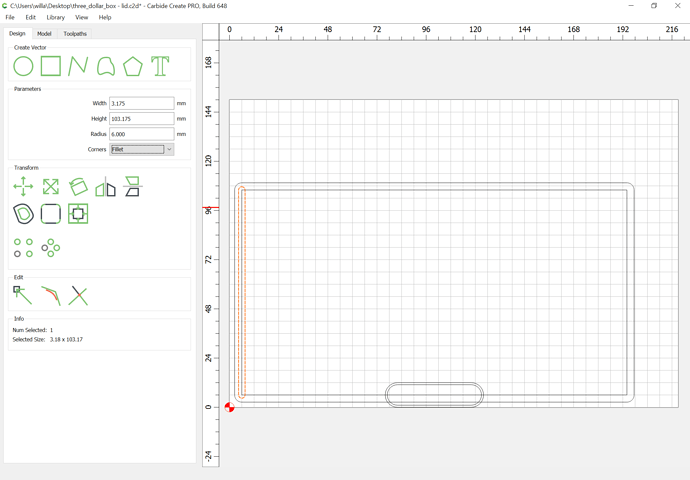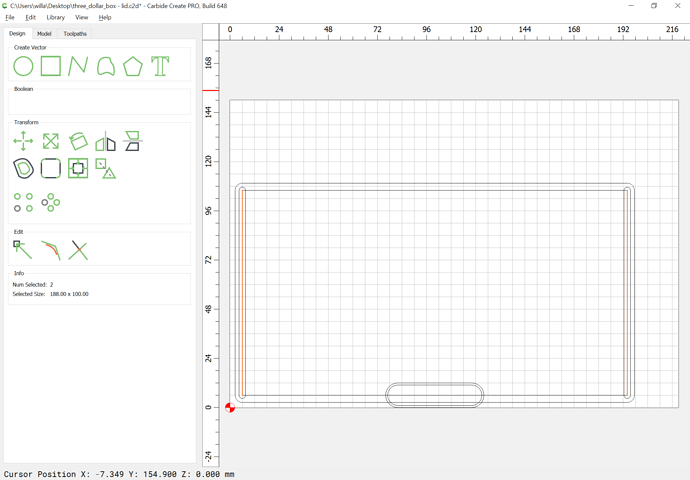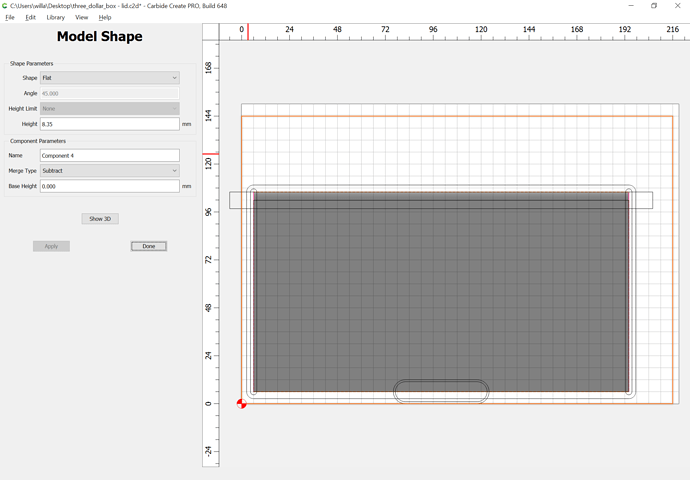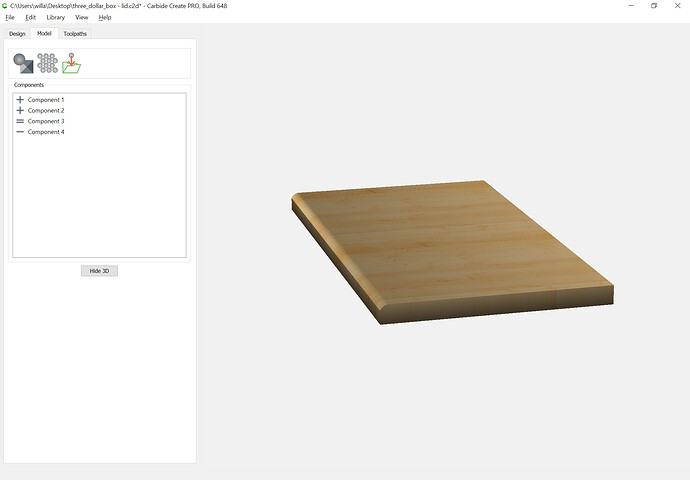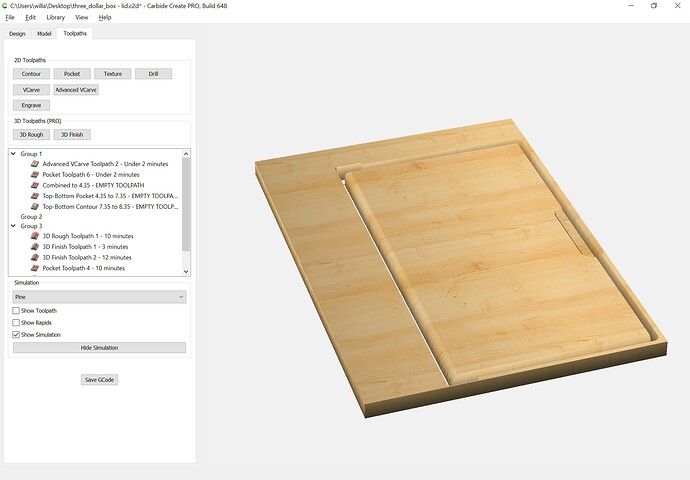The lid is simply a matter of drawing a rectangle of the appropriate size:
drawing in geometry for the finger recess for opening:
offsetting to the outside to the the lid out:
and drawing up the profile of the radius of the lid opening so as to calculate how deep a V carving needs to be to ease that (or one could source a corner radius tool of the correct size, or model it in 3D):
drawing in the geometry for the V carving:
and working out how the radius relief to allow the box opening will be done — one can either source a tool
(the exact size doesn’t seem to be available, but there is a close Imperial size)
which fortuitously is available at my local Woodcraft:
If that isn’t an option, draw things up in profile and work up a series of cuts w/ a ball-nosed endmill as suggested at:
Or, if you have Carbide Create Pro, model the rounding using that:
Assigning toolpaths we arrive at:
